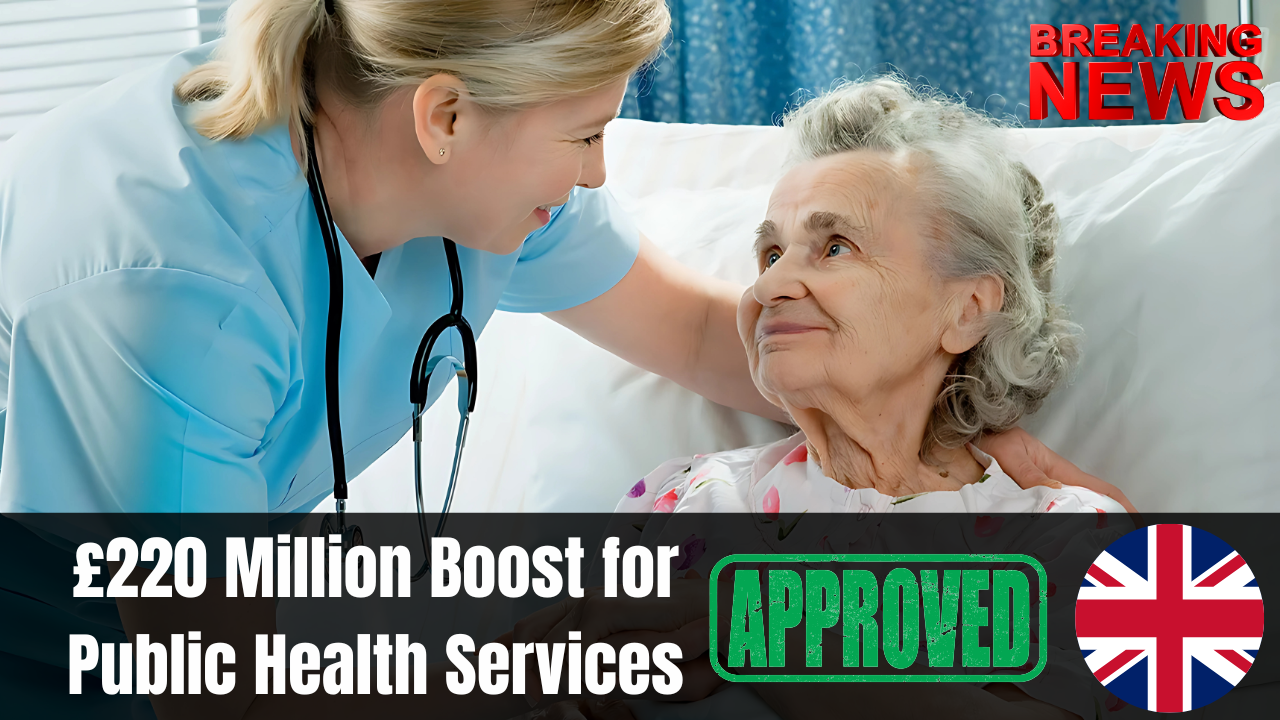The United Kingdom has taken a significant step forward in transforming its healthcare landscape with a substantial financial commitment to local public health services. This groundbreaking investment represents more than just numbers on a budget sheet—it’s a fundamental shift toward preventive care that could reshape how communities across Britain approach health and wellness.
Understanding the Historic Investment
Breaking Down the Numbers
The government has announced a nearly £200 million boost to local public health services, marking the most substantial real-terms increase in nearly a decade. This investment brings the total public health grant to £3.858 billion, representing a 5.4% cash uplift from the previous year’s allocation.
This funding increase comes after years of reduced spending between 2016 and 2024, making it a pivotal moment for local health authorities. The investment demonstrates a clear commitment to rebuilding the foundation of community-based healthcare across England.
Strategic Importance of Prevention
The funding aligns with the government’s Plan for Change, which emphasizes shifting healthcare focus from hospital treatment to community prevention. This approach recognizes that investing in early intervention can prevent more serious health conditions from developing later.
Prevention-focused healthcare has proven more cost-effective than reactive treatment models. By addressing health issues at their source, communities can reduce the long-term burden on hospital services while improving overall population health outcomes.
Services That Will Benefit from the Investment
Family and School Health Programs
Family nurses play a crucial role in supporting vulnerable families during critical periods of child development. These professionals provide essential healthcare guidance to parents and caregivers, helping ensure children receive proper medical attention from birth through adolescence.
School nurses serve as the first line of healthcare within educational settings. They manage everything from routine health screenings to emergency medical situations, making schools safer environments for learning and development.
Sexual Health and Reproductive Services
Sexual health clinics provide confidential, accessible healthcare services that many communities desperately need. These facilities offer comprehensive reproductive health care, including contraception access, STI testing and treatment, and educational programs.
The investment will help expand access to these services, particularly in underserved communities where sexual health resources may be limited. Improved access can lead to better health outcomes and reduced transmission of infectious diseases.
Addiction Recovery and Mental Health Support
Addiction recovery services receive significant attention within this funding framework. These programs provide life-changing support to individuals struggling with substance abuse, offering pathways to recovery and reintegration into society.
Mental health support integrated with addiction services creates a more holistic approach to treatment. This comprehensive model addresses the underlying factors that contribute to substance abuse while providing practical tools for long-term recovery.
Impact on Local Communities
Addressing Health Inequalities
Different communities face unique health challenges based on socioeconomic factors, geographic location, and access to existing healthcare resources. This targeted funding allows local authorities to tailor programs specifically to their residents’ needs.
Health inequalities between different regions and social groups have widened over recent years. The new funding provides an opportunity to address these disparities through targeted interventions that reach the most vulnerable populations.
Smoking Cessation Programs
Smoking cessation initiatives represent one of the most impactful uses of public health funding. These programs help individuals quit tobacco use through counseling, medication, and ongoing support.
The economic benefits of successful smoking cessation programs extend far beyond immediate health improvements. Reduced smoking rates lead to fewer lung disease cases, decreased healthcare costs, and improved quality of life for individuals and families.
Building Healthier Communities for the Future
Children’s Health Focus
Recent investigations have revealed that children are sicker today than they were a decade ago, highlighting the urgent need for preventive interventions. The new funding prioritizes early childhood health programs that can set the foundation for lifelong wellness.
School-based health programs will receive enhanced support, ensuring children have access to regular health screenings, vaccinations, and health education. These early interventions can prevent minor health issues from becoming major problems later in life.
Adult Health Prevention
Adults are experiencing earlier onset of chronic diseases, creating a growing burden on healthcare systems. The funding supports programs that help adults maintain healthy lifestyles and manage risk factors before they develop into serious conditions.
Workplace health initiatives and community wellness programs will benefit from this investment. These programs can help working adults maintain their health while reducing absenteeism and improving productivity.
Long-term Benefits and Economic Impact
Reducing NHS Pressure
By investing in preventive care, the government aims to reduce pressure on hospital services and eliminate treatment backlogs. When people stay healthier longer, they require fewer emergency interventions and costly medical procedures.
The cost-effectiveness of prevention versus treatment has been well-documented. Every pound spent on effective prevention programs can save multiple pounds in future treatment costs while improving quality of life for patients.
Supporting Economic Growth
Healthy communities contribute more effectively to economic growth. When people maintain good health, they can remain productive in the workforce longer and require fewer sick days or disability support.
The investment in public health services creates employment opportunities within local communities while building the infrastructure necessary for long-term economic stability and growth.
Implementation and Local Authority Role
Tailored Service Delivery
Local authorities will receive funding to develop customized health programs that address their specific community needs. This approach recognizes that one-size-fits-all solutions may not be effective across diverse populations and geographic areas.
Community engagement will be essential for successful program implementation. Local authorities must work closely with residents to understand their health priorities and design services that meet those needs effectively.
Collaboration with NHS Services
The funding supports enhanced collaboration between local public health services and NHS providers. This integration ensures that preventive care and treatment services work together seamlessly to support patient health.
Coordination between services reduces duplication of efforts while ensuring that patients receive comprehensive care that addresses both immediate needs and long-term health goals.
Measuring Success and Accountability
Performance Metrics
Local authorities will be required to demonstrate measurable improvements in health outcomes as a result of this investment. Key performance indicators will track service utilization, health improvements, and cost-effectiveness.
Data collection and analysis will play a crucial role in ensuring that funding achieves its intended goals. Regular monitoring allows for program adjustments and continuous improvement in service delivery.
Community Feedback
Public input will be essential for evaluating the success of funded programs. Communities must have opportunities to provide feedback on services and suggest improvements based on their experiences.
Transparency in reporting will help build public trust and ensure that funding is used effectively to improve community health outcomes.
Challenges and Opportunities Ahead
Staffing and Resource Management
Implementing expanded services will require adequate staffing and resource allocation. Local authorities must work to recruit and retain qualified health professionals to deliver these enhanced services effectively.
Training and development programs will be necessary to ensure that staff members have the skills needed to implement evidence-based interventions and achieve desired health outcomes.
Sustainable Long-term Impact
The success of this investment will depend on creating sustainable programs that continue to benefit communities beyond the initial funding period. Local authorities must develop long-term strategies for maintaining and expanding successful initiatives.
Community ownership of health programs increases their likelihood of long-term success. Programs that engage residents as active participants rather than passive recipients tend to achieve better outcomes and greater sustainability.
FAQs
Q: How will local communities know what services are available to them? A: Local authorities will communicate available services through community outreach, websites, and partnerships with existing healthcare providers.
Q: When will these new services become available?
A: Implementation will vary by location, but most areas should see expanded services within the 2025-2026 funding period.
Q: Can individuals request specific types of health services in their area?
A: Yes, community members can contact their local health authorities to express needs and advocate for specific services.
Q: How will the effectiveness of these programs be measured?
A: Success will be tracked through health outcome improvements, service utilization data, and community feedback surveys.
Q: Are these services free to use?
A: Most public health services funded through this grant will be available at no cost to eligible residents.
Q: How does this funding compare to previous years?
A: This represents the largest real-terms increase in nearly a decade, following years of reduced public health spending.
Q: Will rural communities receive the same level of service as urban areas?
A: Funding allocation considers community size and needs, ensuring equitable access across different geographic areas.
Q: Can local businesses partner with these health programs?
A: Yes, local authorities may develop partnerships with businesses to enhance workplace health initiatives and community programs.

